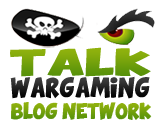
Wednesday, October 29, 2008
Gauntlet International!

http://gauntletinternational.com/flags/RCWFlagWhite2.html
Tuesday, October 28, 2008
Cossacks

Ukrainian Blue Regiment
Tuesday, October 21, 2008
The Medium Mk.A - The "Whippet"
1st Quarter Aircraft Profiles (1900-1925)

http://www.cbrnp.com/profiles/quarter1/index.html
Monday, October 20, 2008
Hanriot HD.1 in Italian Service

Arcana from the Great War

The White Falcons: the White Air Forces 1918-1920

The White Eagles: Polish Aviation 1918-1920

Sunday, October 19, 2008
Plan 1919
Red Fighters, 1918-1920

Italian Combined Operations in the Adriatic, 1915-18
After Caporetto: William Barker & The Italian Expeditionary Force
IMAM Ro 37

The Ro 37 was an all-metal two-seater with fabric-covered wings, tail and fuselage, and an aluminum paneled nose section. A streamlined, articulated, split-axle undercarriage was fitted, with closely spatted wheels. The aircraft weighed 3432 lbs (1560 kg) empty and 5269 lbs (2395 kg) fully loaded. It spanned 36 ft 4 in (11.2 m) and had a wing area of 338 sq ft (32 m²). It was 28-ft 3-in (8.7-m) long.
http://worldatwar.net/chandelle/v4/v4n1-2/ro37.html
Rorke's Drift Web Site

This is a great reference on the battles and its
participants and is an excellent general site for
Victorian era British Army information
http://www.rorkesdr
Saturday, October 18, 2008
Bill's French Fleet!

Last week, Bill unveiled his British Aeronef force: http://pauljamesog.blogspot.com/2008/10/new-britis-aeronef-fleet-commissioned.html
This week, he shows off his new Frenchies, along with close-up pics of both fleets!

I think they are lovely, nicely detailed and crisply finished
Another great find by Tas!
War That Time Forgot!
This is a new war, a war of mechanization, new innovation and....dinosaurs!

"Set during the early days of World War 1, the technology of warfare takes a surprising turn as battlefields quake not with the sound of tanks but shudder to the roars of DINOSAURS!"
Thanks to TAS for this one!
Friday, October 17, 2008
Pygmy Wars Figures Page
Tuesday, October 14, 2008
Sunday, October 12, 2008
Safari to the Psgheti

The Sidney Street Siege

"Police Sergeant Bentley knocked at the door. It was opened, Bentley went in. After a few seconds there was a blaze of a revolver, flashes and shots. A whole gang of people [probably only four] raced out except for one man who took cover. There was a furious struggle, with the [unarmed] police going for their men even as they were being hit again and again by bullets. One member of the gang shot another by mistake, and at this they ran for the entrance to the street, dragging their wounded comrade with them, while injured and dying policemen were helped by the first people to come out of the surrounding houses.
"Things were so confused that the gang managed to get away, and it was not until about midnight that Detective Superintendent Ottaway arrived with a group of armed policemen..."
Saturday, October 11, 2008
Wednesday, October 8, 2008
British Cavalry Second Boer War

Mounties

http://www.sheppardsoftware.com/canadaweb/factfile/Unique-facts-Canada11.htm
Tuesday, October 7, 2008
Reminder From The Home Office......He's Still At Large

~Dr. Steel
Dr. Steel has dedicated his life to the ideal of uniting the people of this world to form one, symbiotic, fun-loving family.
Dr. Steel's vision of transforming this dreary world into a Utopian Playland spans age, race and gender, unifying all of humanity with a singular goal; happiness.
As World Emperor, Dr. Steel strives to rebuild the world, free from boredom, fear and war. Creating a place where fun is the top priority.
Saturday, October 4, 2008
Diaries Of Cpt Arjun Khan

http://www.napnuts.com/vsf_intro.htm
Steam Gear
Fighting In The Home Counties! London Threatened!

Orders of Battle:
Forces of the German Empire:
"SMLS Dassen Foot-Boot" - 'Wotan' Class Ironclad - Flagship
Articulated Armored Gun Crawler "SMLS Funf" - Custom Land Ironclad (Type 2)
Land-Crutzer #1 - Custom Land Ironclad (Type 4)
Land-Crutzer #2 - Custom Land Ironclad (Type 4)
Land-Crutzer #3 - Custom Land Ironclad (Type 4)
Land-Crutzer #4 - Custom Land Ironclad (Type 4)
Vickers Duel Maxim Armored Combat Machine - x3 Contraption bases
Chemical Attack Teams - x3 Chemical Infantry Bases
Krupp & Heinenbacker Semi-Automatic Fighting Dress Battalion - x8 Armored Infantry Bases
X3 Supply Bases
Forces of the Crown:
"HMLS Implausible" - 'Sovereign' Class Ironclad - Flagship
"HMLS Nelson" - 'Britannic' Class Ironclad
"HMLS Kelso" - 'Britannic' Class Ironclad
Cheddar Class Land Ram "HMLS Klompton" - Custom Land Ironclad (Type 3)
"A" "B" "C" "D" & "E" Batteries, 5th RA Regiment - x5 Ten Pounder Gun Bases
2nd Bttn Royal East Kent Regiment 'Buffs' - x5 Infantry Bases
1st Bttn, RN Regiment - x5 Infantry Bases
X2 Supply Bases
The Nikolaus August Otto Mars Pattern Luft-Unterseeboot

The Nikolaus August Otto Mars Pattern Luft-Unterseeboot
Weight:58 tonnes unloaded, 66 tonnes loaded
Range: 220 miles with loaded high performance coal, 460 miles with Martian grey coal
Crew: 1 engineer, 1 driver, 2 able hands, 1 commander
Armament: Classified
Speed: Top speed of 18 Aerial Knots
Armour: Steel plate varying from 12mm to 55mm.
The Luft-Unterseeboot is an unusual design. With very few crewmen the ship can be vulnerable to boarding parties. A problem that has been overcome by having the driver and one of the able hands enclosed in a separate compartment beneath the main body.
Although slow the Luft-Unterseeboot packs a punch. Designed primary to attack ground targets it’s a silent and deadly sight on any battlefield.
Friday, October 3, 2008
Thursday, October 2, 2008
Patrick's Hobby Shed New Tank















































